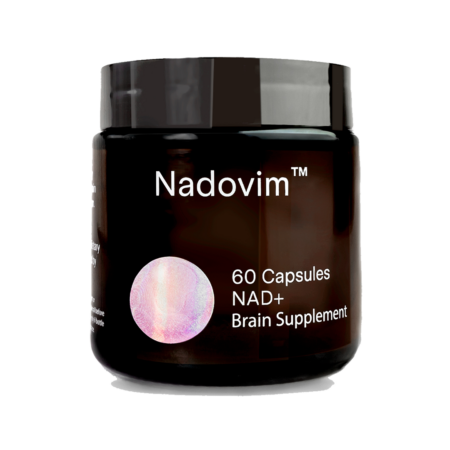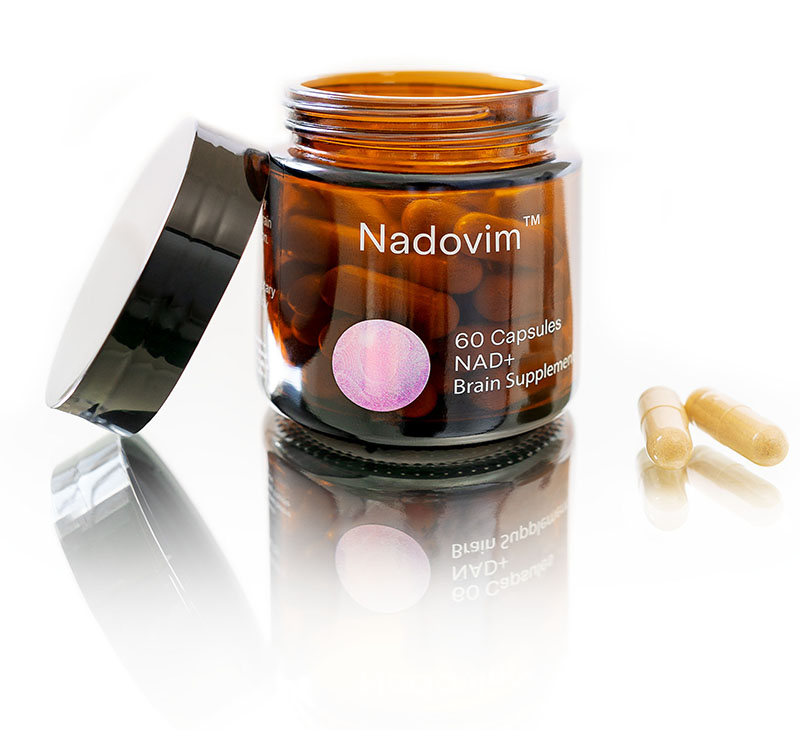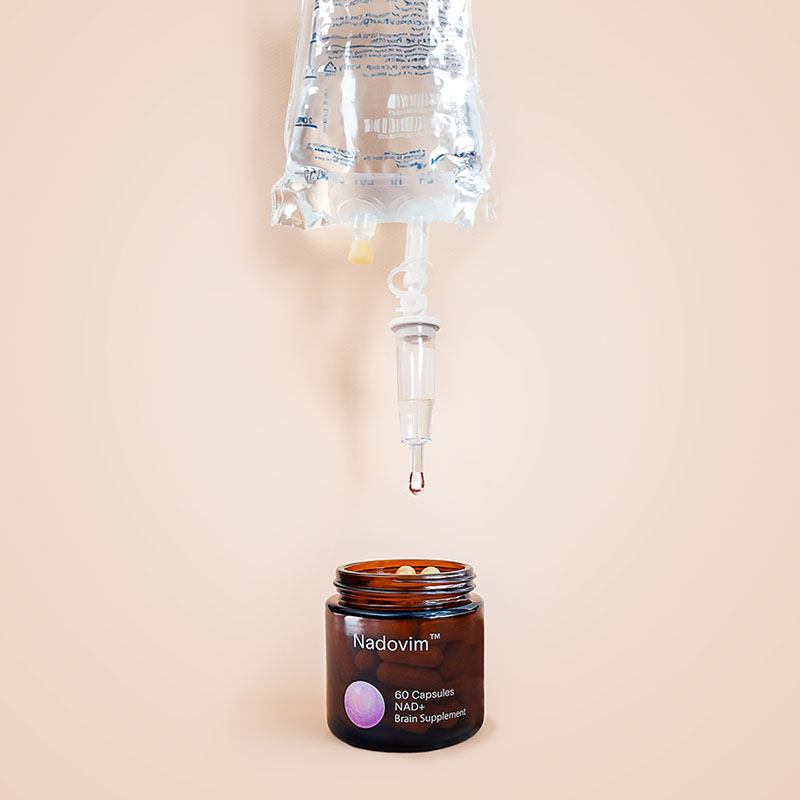What’s the Deal with Oral NAD+ and NAD+ Precursors?
What’s the Deal with Oral NAD+ and NAD+ Precursors? 3 rules to consider
- You want what you are taking to be the actual oral supplement that is labeled on the bottle (because the supplement industry is so poorly regulated).
- You want what you are taking to be properly digested and assimilated by the body.
- You want what you are taking to have the positive effect on the body or body systems that the manufacturers are claiming.
Exploring the Dominant Forms of Oral NAD+ Supplementation: Unveiling the Building Blocks and Conversion Process
In the world of oral NAD+ supplementation, the market is currently dominated by companies selling 4 forms of NAD+: 1-Nicotinamide (Nam), 2-Nicotinamide riboside (NR), 3-Nicotinamide mononucleotide (NMN) and 4-Nicotinamide adenine dinucleotide (NAD+). NAD+ is the key end goal molecule that produces the beneficial biological effects desired in the body.
All 4 molecules are related as they represent larger and larger building blocks of the ultimate NAD+ molecule. Nam being the smallest building block, is converted into NMN by the critical enzyme NAMPT (Nicotinamide Phosphoribosyltransferase) with the addition of a phosphate group.
NMN is then converted into NAD+ by the enzyme NMNAT (Nicotinamide mononucleotide adenylyltransferase) with the addition of another phosphate group, an additional ribose group and an adenosine group [2]. Intracellular NR can feed into NMN production but taken as an oral supplement still needs to be broken down into Nam.
Unraveling the Science of Oral NAD+ and NAD+ Precursors: Digestion, Absorption, and Potential Benefits
All the major digestion and absorption studies done on these molecules have to date been done on rat intestines. The major study published in the Journal of Nutrition in 1982 entitled, “Digestion and absorption of NAD+ by the small intestine of the rat.” by Gross and Henderson, showed that NAD+ taken orally is rapidly hydrolyzed into NMN, then into NR and then ultimately absorbed by the small intestine as Nam and its other constituent parts (ribose groups, phosphate groups, and adenine). The enzymes responsible for this would be the protease enzymes in charge of cleaving peptide and nitrogen bonds [3]. Similar studies on oral NMN and NR showed that they needed to be hydrolyzed into Nam as well before being absorbed by the small intestine [4]. It would seem that Nam acts as the smallest building block to NAD+ which can absorbed by the small intestine mucosal brush border cells.
Advances in Research
Newer research on NMN has proven the existence of whole molecule transporters that can bring the larger NAD+ precursors such as NMN across the small intestine in tact [6]. Previous studies have shown that the majority of NAD+ and NAD+ precursor molecules are digested by the small intestine and only brought into the body as Nam (as well as ribose, phosphate and adenosine sub groups). This new transporter termed Slc12a8, can bring the whole NMN molecule across the small intestine without breaking it down into Nam first. This new study published in the journal Nature in January 2019 is the first such study proving the existence of whole molecule transporters in NAD+ metabolism [7]. In the study, investigators found that in aged mice the Slc12a8 transporter was upregulated so that NMN could be absorbed faster and more efficiently. By blocking expression of Slc12a8 also found decreases in systemic levels of NAD+.
Advancements in Oral NAD+ Research: Bioavailability, Metabolism, and Therapeutic Potential
In recent years, there have been significant advances in research on oral NAD+ and NAD+ precursors. One of the most exciting developments has been the identification of new precursors that are more bioavailable than previous options.
Scientists have also made progress in understanding how these compounds are metabolized by the body. This knowledge is essential for developing effective dosing strategies and maximizing the benefits of these supplements.
Another area of active investigation is exploring the potential therapeutic applications of NAD+. There is growing evidence that raising cellular levels of this molecule could be beneficial for a wide range of conditions, including neurodegenerative diseases and metabolic disorders.
In addition to studying oral supplements, researchers are also investigating other methods for increasing NAD+ levels in the body. These include intravenous infusions and gene therapy approaches.
These advances offer promising new avenues for improving health outcomes through modulation of NAD+ metabolism. As research continues, we can expect to learn even more about how we can harness the power of this important molecule to support optimal wellness.
Future Areas of Investigation
It stands to reason that transporters for whole NAD+ also exist since the larger NMN and NAD+ molecules take a lot of energy to rebuild into NAD+ once in the body. The principle of biological optimization points to the concept of biological efficiency that has evolved in organisms over time [8]. Higher order molecules are energetically expensive for the body to reproduce so biological optimization principles would suggest that these critical, higher order compounds, such as NAD+, would be absorbed intact rather than broken down and rebuilt once in the body. The existence of the Slc12a8 proves that fact for NMN, which is only slightly smaller in size than the whole NAD+ molecule.
The fact that many anecdotal reports prove clinical improvement in taking oral NAD+ immediately upon ingestion would suggest, just as in the mice NMN studies, that rapid spikes in NAD+ serum levels would correlate with such a whole molecule intestinal uptake, rather than a delayed breakdown and reassembly in the body. It is only a matter of time and research dollars before novel transport pathways are found for the whole NAD+ molecule.
The end goal of any oral NAD+ supplementation is an increase in the systemic NAD+ pool. Much of the research by companies selling NR supplements has proven that oral NR supplementation does increase systemic serum levels of NAD+ with corresponding improvements in symptom presentation [9]. Similar studies have also shown supplementation with Nam and NMN provide similar increases in the systemic NAD+ pool [10].
Newer research into oral NAD+ has also shown it to increase the systemic pool of NAD+ [11]. A 2006 study published in the Journal of Nutrition Science entitled, “Comparison of metabolic fates of nicotinamide, NAD+ and NADH administered orally and intraperitoneally; characterization of oral NADH”, showed that oral supplementation with NAD+ increased excretion of NAD+ metabolites in studied rats, proving that a systemic increase in the NAD+ had occurred [12]. The same study showed that NADH was unable to cross the small intestinal mucosal cells and was likely converted into an unknown intermediary [13].
Another way to prove whether an NAD+ supplement is working as it is claiming it does is through clinical patient experience. Many patients supplementing with oral NAD+ products, such as NADOVIM, have anecdotally reported increases in energy, cognition, and mental acuity. Reports of decreased fatigue, brain fog, memory deficits, ataxia, tremors and other neurological impairments have also been reported by doctors utilizing NADOVIM with their patients. These anecdotal symptom improvement reports would lend further evidence to the fact that oral supplementation with NAD+ does increase the systemically available NAD+ pool and contributes to improvements in cellular metabolism.
The field of oral NAD+ and NAD+ precursors is still relatively new, and there are many areas that require further investigation. One important area for future research is the long-term effects of supplementing with these compounds.
While early studies have shown promising results in terms of improving energy levels and reducing inflammation, it’s unclear how sustained use may impact overall health. Further studies will be needed to determine whether or not there are any negative side effects associated with prolonged supplementation.
Another area for investigation is the optimal dosages of oral NAD+ supplements. While some studies have used high doses without adverse effects, it’s unclear what the ideal dosage range should be. More research will be needed to determine safe and effective dosages for different populations.
Additionally, researchers will need to continue exploring the mechanisms by which oral NAD+ supplements work within the body. Understanding these mechanisms could lead to more targeted therapies that can better address specific health concerns.
While much has been learned about oral NAD+ and its precursors in recent years, there is still plenty left to explore. Continued research in these areas promises to shed light on new ways that we can support our overall health through supplementation.

$79 / month
The only clinical grade NAD+ brain suplements used to improve focus, concentration and memory.
Want to Increase Your NAD+ Levels in 90 Days?
Disclaimer: The statements made in this article have not been evaluated by the Food and Drug Administration. Any products or treatments mentioned are not intended to diagnose, treat, cure, or prevent any disease. Please consult a licensed medical practitioner for medical advice.
At Innovative Medicine, we believe in transparency. We want you to know that we may participate in affiliate advertising programs pertaining to products mentioned herein.

How to Increase NAD Levels Naturally
Here are 7 mind-bending (or should we say brain-altering?) books on the new science of brain research from authors like Joe Dispenza, Bruce Lipton and others.
Read More
NAD IV Therapy: A Rising Novel Treatment for Chronic Diseases
Here are 7 mind-bending (or should we say brain-altering?) books on the new science of brain research from authors like Joe Dispenza, Bruce Lipton and others.
Read More
7 Books That Will Make You Think Differently About Your Brain
Here are 7 mind-bending (or should we say brain-altering?) books on the new science of brain research from authors like Joe Dispenza, Bruce Lipton and others.
Read More How to Increase NAD Levels Naturally
How to Increase NAD Levels Naturally 

